Filter by

Exploring chemical analysis 3rd edition
- Edition
- Third edition
- ISBN/ISSN
- 9780716705710
- Collation
- xiii, 610 p. : ill. : ind. ; 25 cm
- Series Title
- -
- Call Number
- 543.51 Har e
- Edition
- Third edition
- ISBN/ISSN
- 9780716705710
- Collation
- xiii, 610 p. : ill. : ind. ; 25 cm
- Series Title
- -
- Call Number
- 543.51 Har e

Microbiology : an introduction 9th edition
- Edition
- Ninth edition
- ISBN/ISSN
- 9780321396020
- Collation
- xxvi, 958 p. : ill. : ind. ; 28 cm.
- Series Title
- -
- Call Number
- 579 Tor m
- Edition
- Ninth edition
- ISBN/ISSN
- 9780321396020
- Collation
- xxvi, 958 p. : ill. : ind. ; 28 cm.
- Series Title
- -
- Call Number
- 579 Tor m
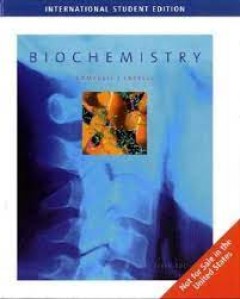
Biochemistry 6th edition
- Edition
- Sixth edition
- ISBN/ISSN
- 9780495390466
- Collation
- xviii, 751 p. : ill. : ind. ; 28 cm.
- Series Title
- -
- Call Number
- 572 Cam b
- Edition
- Sixth edition
- ISBN/ISSN
- 9780495390466
- Collation
- xviii, 751 p. : ill. : ind. ; 28 cm.
- Series Title
- -
- Call Number
- 572 Cam b
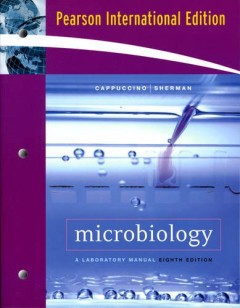
Microbiology : a laboratory manual 8th edition
- Edition
- Eighth edition
- ISBN/ISSN
- 9780321488206
- Collation
- 569 p. : ill. : ind. ; 28 cm.
- Series Title
- -
- Call Number
- 576.076 Cap m
- Edition
- Eighth edition
- ISBN/ISSN
- 9780321488206
- Collation
- 569 p. : ill. : ind. ; 28 cm.
- Series Title
- -
- Call Number
- 576.076 Cap m
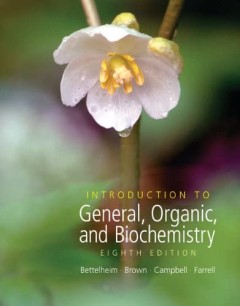
Introduction to general, organic, and biochemistry 8th edition
- Edition
- Eighth edition
- ISBN/ISSN
- 9780495125402
- Collation
- xxv, 804 p. : ill. : ind. ; 28 cm.
- Series Title
- -
- Call Number
- 540 Bet i
- Edition
- Eighth edition
- ISBN/ISSN
- 9780495125402
- Collation
- xxv, 804 p. : ill. : ind. ; 28 cm.
- Series Title
- -
- Call Number
- 540 Bet i
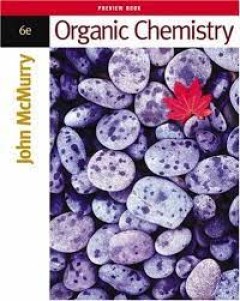
Organic chemistry 6th edition
- Edition
- Sixth edition
- ISBN/ISSN
- 9780534420055
- Collation
- xxix, 1176 p. : ill. : ind. ; 26 cm.
- Series Title
- -
- Call Number
- 547 McM o
- Edition
- Sixth edition
- ISBN/ISSN
- 9780534420055
- Collation
- xxix, 1176 p. : ill. : ind. ; 26 cm.
- Series Title
- -
- Call Number
- 547 McM o
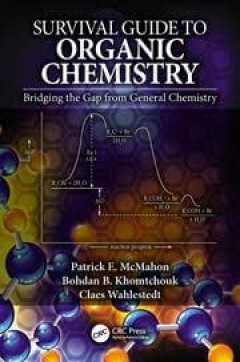
Survival guide to organic chemistry: bridging the gap from general chemistry
- Edition
- -
- ISBN/ISSN
- 9781032339795
- Collation
- xix, 654 p. : ill. : ind. ; 25 cm.
- Series Title
- -
- Call Number
- 547 McM s
- Edition
- -
- ISBN/ISSN
- 9781032339795
- Collation
- xix, 654 p. : ill. : ind. ; 25 cm.
- Series Title
- -
- Call Number
- 547 McM s
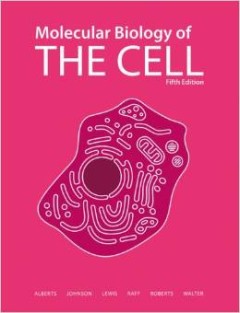
Molecular biology of the cell
The new Fifth Edition, which has been completely revised and updated to describe our current, rapidly advancing understanding of cell biology. To list but a few examples, a large amount of new material is presented on epigenetics; stem cells; RNAi; comparative genomics; the latest cancer therapies; apoptosis (now its own separate chapter); and cell cycle control and the mechanics of M phase.
- Edition
- 5th
- ISBN/ISSN
- 9780815341062
- Collation
- xxxix, 1219, 44 p. : ill. ; 29 cm.
- Series Title
- -
- Call Number
- 572.8 Alb m

Nanoparticles and the immune system volume 1: human immune system
- Edition
- -
- ISBN/ISSN
- 9783110654073
- Collation
- 143 p. : ill. : ind. ; 24 cm.
- Series Title
- -
- Call Number
- 553.61 Gho n
- Edition
- -
- ISBN/ISSN
- 9783110654073
- Collation
- 143 p. : ill. : ind. ; 24 cm.
- Series Title
- -
- Call Number
- 553.61 Gho n

Bioinformatics : a practical guide to NCBI databases and sequence alignments
- Edition
- -
- ISBN/ISSN
- 9781032123691
- Collation
- xi, 456 p. : ill. : ind. ; 29 cm.
- Series Title
- -
- Call Number
- 570.285 Bio
- Edition
- -
- ISBN/ISSN
- 9781032123691
- Collation
- xi, 456 p. : ill. : ind. ; 29 cm.
- Series Title
- -
- Call Number
- 570.285 Bio
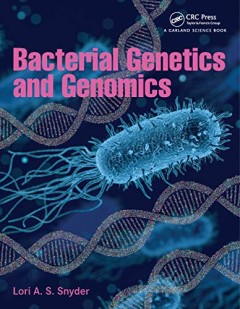
Bacterial genetics and genomics
- Edition
- -
- ISBN/ISSN
- 9780815345695
- Collation
- xx, 389 p. : ill. : ind. ; 28 cm.
- Series Title
- -
- Call Number
- 579.3135 Sny b
- Edition
- -
- ISBN/ISSN
- 9780815345695
- Collation
- xx, 389 p. : ill. : ind. ; 28 cm.
- Series Title
- -
- Call Number
- 579.3135 Sny b

Plant-based functional foods and phytochemicals : from traditional knowledge …
- Edition
- -
- ISBN/ISSN
- 9781771889292
- Collation
- xxx, 348 p. : ill. ; 25 cm.
- Series Title
- -
- Call Number
- 572.2 Pla
- Edition
- -
- ISBN/ISSN
- 9781771889292
- Collation
- xxx, 348 p. : ill. ; 25 cm.
- Series Title
- -
- Call Number
- 572.2 Pla

The genesis machine : our quest to rewrite life in the age of synthetic biology
Synthetic biology is the promising and controversial technology platform that combines biology and artificial intelligence, opening up the potential to program biological systems much as we program computers. Synthetic biology enables us not just to read and edit DNA - the technique of CRISPR - but also write it. Rather than life being "a beautiful game of chance", synthetic biology creates the…
- Edition
- -
- ISBN/ISSN
- 9781541797918
- Collation
- 352 p. : ill. : ind. ; 24 cm.
- Series Title
- -
- Call Number
- 572.86 Web g

Business statistics: communicating with numbers fourth edition
- Edition
- Fourth edition
- ISBN/ISSN
- 9781260597561
- Collation
- xxx, 770 p. : ill. : ind. ; 28 cm.
- Series Title
- -
- Call Number
- 519.5 Jag b
- Edition
- Fourth edition
- ISBN/ISSN
- 9781260597561
- Collation
- xxx, 770 p. : ill. : ind. ; 28 cm.
- Series Title
- -
- Call Number
- 519.5 Jag b
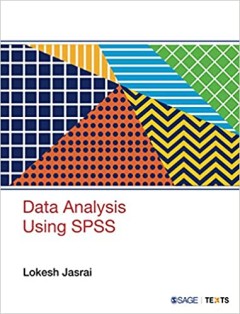
Data analysis using SPSS
- Edition
- -
- ISBN/ISSN
- 9789353883287
- Collation
- xlii, 401 p. : ill. : ind. ; 24 cm.
- Series Title
- -
- Call Number
- 519.50285 Jas d
- Edition
- -
- ISBN/ISSN
- 9789353883287
- Collation
- xlii, 401 p. : ill. : ind. ; 24 cm.
- Series Title
- -
- Call Number
- 519.50285 Jas d

Experimental designs
- Edition
- -
- ISBN/ISSN
- 9781526426628
- Collation
- 224 p. : ill. : ind. ; 24 cm.
- Series Title
- -
- Call Number
- 519.5 Ari e
- Edition
- -
- ISBN/ISSN
- 9781526426628
- Collation
- 224 p. : ill. : ind. ; 24 cm.
- Series Title
- -
- Call Number
- 519.5 Ari e

Applied statistics : business and management research
- Edition
- -
- ISBN/ISSN
- 9781473947450
- Collation
- xvi, 438 p. : ill. : ind. ; 25 cm.
- Series Title
- -
- Call Number
- 519.5 Tim a
- Edition
- -
- ISBN/ISSN
- 9781473947450
- Collation
- xvi, 438 p. : ill. : ind. ; 25 cm.
- Series Title
- -
- Call Number
- 519.5 Tim a

Population genetics
This book aims to make population genetics approachable, logical and easily understood. To achieve these goals, the book's design emphasizes well explained introductions to key principles and predictions. These are augmented with case studies as well as illustrations along with introductions to classical hypotheses and debates. Pedagogical features in the text include:* Interact boxes that guid…
- Edition
- -
- ISBN/ISSN
- 9781405132770
- Collation
- xiii, 407 p. : ill. : ind. ; 28 cm.
- Series Title
- -
- Call Number
- 576.58 Ham p
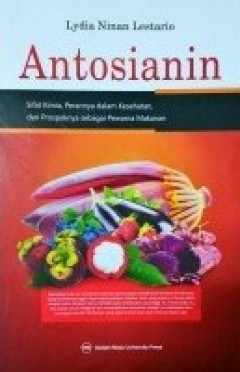
Antosianin : sifat kimia, perannya dalam kesehatan, dan prospeknya sebagai pe…
- Edition
- -
- ISBN/ISSN
- 9786023862771
- Collation
- xix, 208 p. : ill. : ind. ; 23 cm.
- Series Title
- -
- Call Number
- 574.192 Lyd a
- Edition
- -
- ISBN/ISSN
- 9786023862771
- Collation
- xix, 208 p. : ill. : ind. ; 23 cm.
- Series Title
- -
- Call Number
- 574.192 Lyd a

Taksonomi tumbuhan obat-obatan
- Edition
- -
- ISBN/ISSN
- 9789794203002
- Collation
- ix, 447 p. : ill. ; 23 cm.
- Series Title
- -
- Call Number
- 582.12 Gem t
- Edition
- -
- ISBN/ISSN
- 9789794203002
- Collation
- ix, 447 p. : ill. ; 23 cm.
- Series Title
- -
- Call Number
- 582.12 Gem t

Spektroskopi molekuler untuk analisis farmasi
- Edition
- -
- ISBN/ISSN
- 9789794209837
- Collation
- xviii, 173 p. : ill. : ind. ; 23 cm.
- Series Title
- -
- Call Number
- 543.5 Ibn s
- Edition
- -
- ISBN/ISSN
- 9789794209837
- Collation
- xviii, 173 p. : ill. : ind. ; 23 cm.
- Series Title
- -
- Call Number
- 543.5 Ibn s

Bahan ajar mikrobiologi
- Edition
- -
- ISBN/ISSN
- 9786023861750
- Collation
- xvi, 151 p. : ill. ; 23 cm.
- Series Title
- -
- Call Number
- 579 End b
- Edition
- -
- ISBN/ISSN
- 9786023861750
- Collation
- xvi, 151 p. : ill. ; 23 cm.
- Series Title
- -
- Call Number
- 579 End b
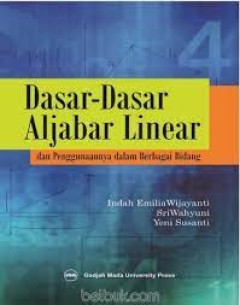
Dasar-dasar aljabar linear dan penggunaannya dalam berbagai bidang
- Edition
- -
- ISBN/ISSN
- 9786023860197
- Collation
- viii, 196 p. : ill. ; 23 cm.
- Series Title
- -
- Call Number
- 512.5 Ind d
- Edition
- -
- ISBN/ISSN
- 9786023860197
- Collation
- viii, 196 p. : ill. ; 23 cm.
- Series Title
- -
- Call Number
- 512.5 Ind d

Kimia medisinal anorganik
- Edition
- -
- ISBN/ISSN
- 9786023861293
- Collation
- xiii,172 p. : ill. : ind. ; 23 cm.
- Series Title
- -
- Call Number
- 546 Gan k
- Edition
- -
- ISBN/ISSN
- 9786023861293
- Collation
- xiii,172 p. : ill. : ind. ; 23 cm.
- Series Title
- -
- Call Number
- 546 Gan k

Next-generation sequencing in medicine
- Edition
- -
- ISBN/ISSN
- 9781621821137
- Collation
- vii, 192 p. : ill. ; 26 cm.
- Series Title
- -
- Call Number
- 572.8633 Nex
- Edition
- -
- ISBN/ISSN
- 9781621821137
- Collation
- vii, 192 p. : ill. ; 26 cm.
- Series Title
- -
- Call Number
- 572.8633 Nex
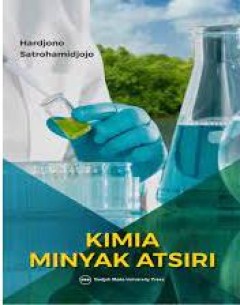
Kimia minyak atsiri
- Edition
- -
- ISBN/ISSN
- 9789794205518
- Collation
- 248 p. : ill. ; 26 cm.
- Series Title
- -
- Call Number
- 547.71 Har k
- Edition
- -
- ISBN/ISSN
- 9789794205518
- Collation
- 248 p. : ill. ; 26 cm.
- Series Title
- -
- Call Number
- 547.71 Har k
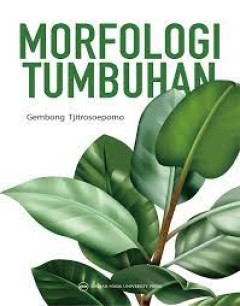
Morfologi tumbuhan
- Edition
- -
- ISBN/ISSN
- 9786023868193
- Collation
- x, 244 p. : ill. ; 23 cm.
- Series Title
- -
- Call Number
- 581.4 Tji m
- Edition
- -
- ISBN/ISSN
- 9786023868193
- Collation
- x, 244 p. : ill. ; 23 cm.
- Series Title
- -
- Call Number
- 581.4 Tji m

Genetika manusia
- Edition
- -
- ISBN/ISSN
- 9789794200223
- Collation
- xvi, 523 p. : ill. ; 21 cm.
- Series Title
- -
- Call Number
- 576.5 Sur g
- Edition
- -
- ISBN/ISSN
- 9789794200223
- Collation
- xvi, 523 p. : ill. ; 21 cm.
- Series Title
- -
- Call Number
- 576.5 Sur g

Chemistry made easy: an illustrated study guide for students to easily learn …
- Edition
- -
- ISBN/ISSN
- 9781952914058
- Collation
- 206 p. : ill. ; 28 cm.
- Series Title
- -
- Call Number
- 540 Che
- Edition
- -
- ISBN/ISSN
- 9781952914058
- Collation
- 206 p. : ill. ; 28 cm.
- Series Title
- -
- Call Number
- 540 Che
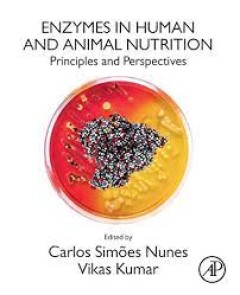
Enzymes in human and animal nutrition: principles and perspectives
- Edition
- -
- ISBN/ISSN
- 9780128054192
- Collation
- xl, 550 p. : ill. : ind. ; 24 cm.
- Series Title
- -
- Call Number
- 572.7 Enz
- Edition
- -
- ISBN/ISSN
- 9780128054192
- Collation
- xl, 550 p. : ill. : ind. ; 24 cm.
- Series Title
- -
- Call Number
- 572.7 Enz

Genome editing and engineering: from TALENs, ZFNs and CRISPRs to molecular su…
- Edition
- -
- ISBN/ISSN
- 9781107170377
- Collation
- xxix, 472 p. : ill. : ind. ; 25 cm.
- Series Title
- -
- Call Number
- 576.5072 Gen
- Edition
- -
- ISBN/ISSN
- 9781107170377
- Collation
- xxix, 472 p. : ill. : ind. ; 25 cm.
- Series Title
- -
- Call Number
- 576.5072 Gen

Single-molecule science : from super-resolution microscopy to DNA mapping and…
- Edition
- -
- ISBN/ISSN
- 9781108423366
- Collation
- xxii, 147 p. : ill. : ind. ; 25 cm.
- Series Title
- -
- Call Number
- 572.82 Sin
- Edition
- -
- ISBN/ISSN
- 9781108423366
- Collation
- xxii, 147 p. : ill. : ind. ; 25 cm.
- Series Title
- -
- Call Number
- 572.82 Sin

The statquest illustrated guide to machine learning!!!
- Edition
- -
- ISBN/ISSN
- 9798811583607
- Collation
- 305 p. : ill. : ind. ; 17 cm.
- Series Title
- -
- Call Number
- 572.80285 Sta s
- Edition
- -
- ISBN/ISSN
- 9798811583607
- Collation
- 305 p. : ill. : ind. ; 17 cm.
- Series Title
- -
- Call Number
- 572.80285 Sta s
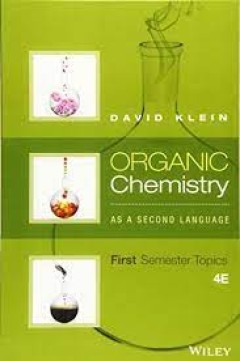
Organic chemistry as a second language
- Edition
- -
- ISBN/ISSN
- 9781119110668
- Collation
- xii, 382 p. : ill. ; 24 cm.
- Series Title
- -
- Call Number
- 547 Kle o
- Edition
- -
- ISBN/ISSN
- 9781119110668
- Collation
- xii, 382 p. : ill. ; 24 cm.
- Series Title
- -
- Call Number
- 547 Kle o
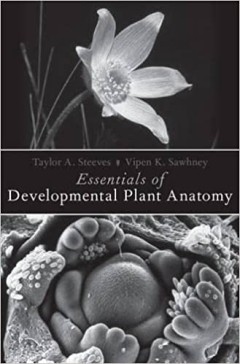
Essentials of developmental plant anatomy
- Edition
- -
- ISBN/ISSN
- 9780190657055
- Collation
- x, 168 p. : ill. : ind. ; 25 cm
- Series Title
- -
- Call Number
- 571.32 Ste e
- Edition
- -
- ISBN/ISSN
- 9780190657055
- Collation
- x, 168 p. : ill. : ind. ; 25 cm
- Series Title
- -
- Call Number
- 571.32 Ste e

Explaining research : how to reach key audiences to advance your work second …
- Edition
- Second edition
- ISBN/ISSN
- 9780197571316
- Collation
- xiii, 393 p. : ill. : ind. ; 24 cm.
- Series Title
- -
- Call Number
- 507.2 Mer e
- Edition
- Second edition
- ISBN/ISSN
- 9780197571316
- Collation
- xiii, 393 p. : ill. : ind. ; 24 cm.
- Series Title
- -
- Call Number
- 507.2 Mer e

Amino acids : biochemistry and nutrition 2nd edition
Following its predecessor, the second edition of Amino Acids: Biochemistry and Nutrition presents exhaustive coverage of amino acids in the nutrition, metabolism and health of humans and other animals. Substantially revised, expanded and updated to reflect scientific advances, this book introduces the basic principles of amino acid biochemistry and nutrition, while highlighting the current know…
- Edition
- Second edition
- ISBN/ISSN
- 9781032030890
- Collation
- -
- Series Title
- -
- Call Number
- 572.65 Wu a

A world from dust : how the periodic table shaped life
- Edition
- -
- ISBN/ISSN
- 9780190275013
- Collation
- xiv, 333 p.: ill. : ind. ; 25 cm
- Series Title
- -
- Call Number
- 572 McF w
- Edition
- -
- ISBN/ISSN
- 9780190275013
- Collation
- xiv, 333 p.: ill. : ind. ; 25 cm
- Series Title
- -
- Call Number
- 572 McF w

The nucleus second edition
- Edition
- Second edition
- ISBN/ISSN
- 9781621823896
- Collation
- vii, 521 p. : ill. : ind. ; 26 cm.
- Series Title
- -
- Call Number
- 571.66 Nuc
- Edition
- Second edition
- ISBN/ISSN
- 9781621823896
- Collation
- vii, 521 p. : ill. : ind. ; 26 cm.
- Series Title
- -
- Call Number
- 571.66 Nuc
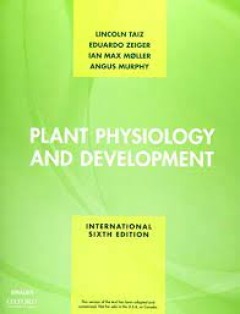
Plant physiology and development
- Edition
- Sixth edition
- ISBN/ISSN
- 9781605357454
- Collation
- ix, 761 p. : ill. : ind. ; 28 cm.
- Series Title
- -
- Call Number
- 571.2 Tai p
- Edition
- Sixth edition
- ISBN/ISSN
- 9781605357454
- Collation
- ix, 761 p. : ill. : ind. ; 28 cm.
- Series Title
- -
- Call Number
- 571.2 Tai p

Secret worlds : the extraordinary senses of animals
"How do animals experience the world? Many animals experience a world far richer than ours, in sight, sound, and smell, and interact with each other in ways humans simply do not pick up, and which continue to surprise researchers. This book explores not only the wonder of animal senses, but how they work and how scientists go about investigating them. And, throughout, it considers how these sen…
- Edition
- -
- ISBN/ISSN
- 9780198813675
- Collation
- x, 254 p. : ill. : ind. ; 24 cm.
- Series Title
- -
- Call Number
- 500 Sec
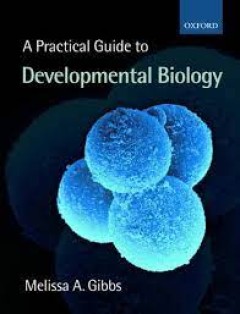
A practical guide to developmental biology
- Edition
- -
- ISBN/ISSN
- 9780199249718
- Collation
- vii, 118 p. : ill. : ind. ; 25 cm.
- Series Title
- -
- Call Number
- 571.8078 Gib p
- Edition
- -
- ISBN/ISSN
- 9780199249718
- Collation
- vii, 118 p. : ill. : ind. ; 25 cm.
- Series Title
- -
- Call Number
- 571.8078 Gib p

Auxin signaling : from synthesis to systems biology
Auxin is an important plant hormone that controls numerous aspects of development and physiology, including responses to light, tissue patterning, and organogenesis. The book examines how auxin is synthesized, the biochemical basis for its actions, and its various different roles in plant biology"
- Edition
- Second edition
- ISBN/ISSN
- 9781621824008
- Collation
- viii, 467 p. : ill. : ind. ; 26 cm.
- Series Title
- -
- Call Number
- 571.742 Aux
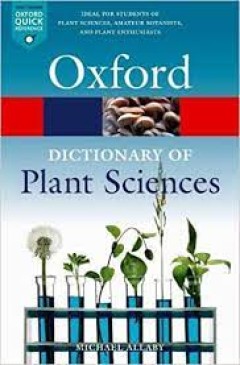
A dictionary of plant sciences
- Edition
- Fourth edition
- ISBN/ISSN
- 9780198833338
- Collation
- 616 p. : ill. : ind. ; 20 cm.
- Series Title
- -
- Call Number
- 580.3 Dic
- Edition
- Fourth edition
- ISBN/ISSN
- 9780198833338
- Collation
- 616 p. : ill. : ind. ; 20 cm.
- Series Title
- -
- Call Number
- 580.3 Dic

Science exam booster notes - lower block
- Edition
- -
- ISBN/ISSN
- 9789814244091
- Collation
- 300 p. : ill. ; 21 cm.
- Series Title
- -
- Call Number
- 500 Phu s
- Edition
- -
- ISBN/ISSN
- 9789814244091
- Collation
- 300 p. : ill. ; 21 cm.
- Series Title
- -
- Call Number
- 500 Phu s
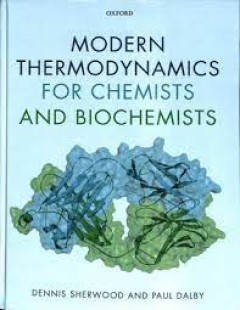
Modern thermodynamics for chemists and biochemists
- Edition
- -
- ISBN/ISSN
- 9780198784708
- Collation
- xxix, 870 p. : ill. : ind. ; 25 cm.
- Series Title
- -
- Call Number
- 536.7 She m
- Edition
- -
- ISBN/ISSN
- 9780198784708
- Collation
- xxix, 870 p. : ill. : ind. ; 25 cm.
- Series Title
- -
- Call Number
- 536.7 She m

Periodicity and the s- and p- block elements
- Edition
- -
- ISBN/ISSN
- 9780198835349
- Collation
- viii, 148 p. : ill. : ind. ; 25 cm.
- Series Title
- -
- Call Number
- 546.8 Nor p
- Edition
- -
- ISBN/ISSN
- 9780198835349
- Collation
- viii, 148 p. : ill. : ind. ; 25 cm.
- Series Title
- -
- Call Number
- 546.8 Nor p

Thermodynamics of chemical processes
- Edition
- Second edition
- ISBN/ISSN
- 9780198814450
- Collation
- xi, 112 p. : ill. : ind. ; 25 cm.
- Series Title
- -
- Call Number
- 541.3 Pri t
- Edition
- Second edition
- ISBN/ISSN
- 9780198814450
- Collation
- xi, 112 p. : ill. : ind. ; 25 cm.
- Series Title
- -
- Call Number
- 541.3 Pri t

Revise S1 edexcel As and A level modular mathematics : Statistics 1
- Edition
- Revise 1
- ISBN/ISSN
- 9780435519308
- Collation
- 78 p. : ill. ; 27 cm.
- Series Title
- -
- Call Number
- 510 Att r
- Edition
- Revise 1
- ISBN/ISSN
- 9780435519308
- Collation
- 78 p. : ill. ; 27 cm.
- Series Title
- -
- Call Number
- 510 Att r
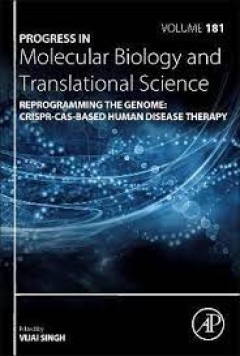
Progress in molecular biology and translational science : reprogramming the g…
- Edition
- Volume 181
- ISBN/ISSN
- 9780323853231
- Collation
- xvi, 376 p. : ill. : ind. ; 24 cm.
- Series Title
- -
- Call Number
- 571.6 Pro
- Edition
- Volume 181
- ISBN/ISSN
- 9780323853231
- Collation
- xvi, 376 p. : ill. : ind. ; 24 cm.
- Series Title
- -
- Call Number
- 571.6 Pro
 Computer Science, Information & General Works
Computer Science, Information & General Works  Philosophy & Psychology
Philosophy & Psychology  Religion
Religion  Social Sciences
Social Sciences  Language
Language  Pure Science
Pure Science  Applied Sciences
Applied Sciences  Art & Recreation
Art & Recreation  Literature
Literature  History & Geography
History & Geography